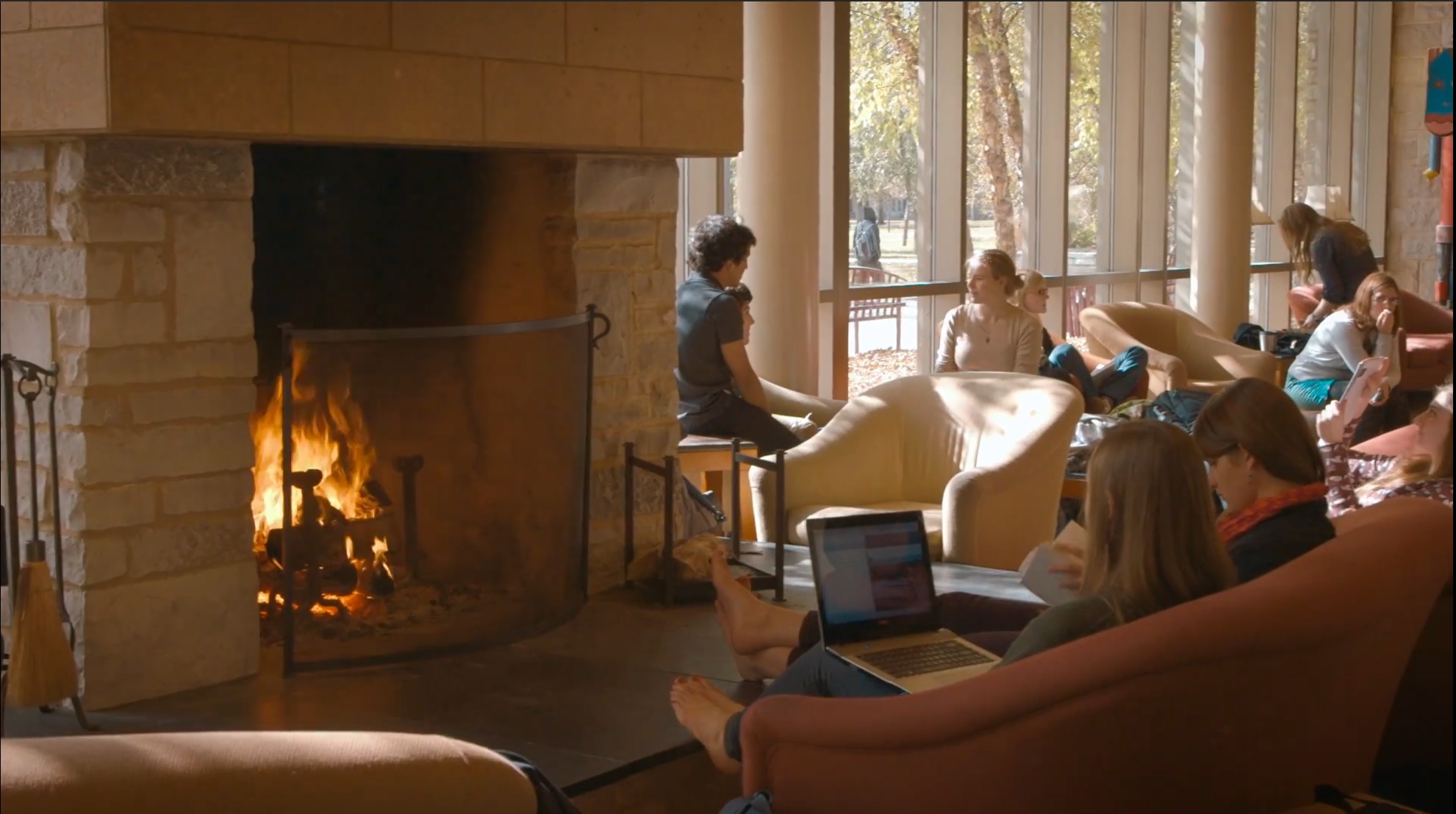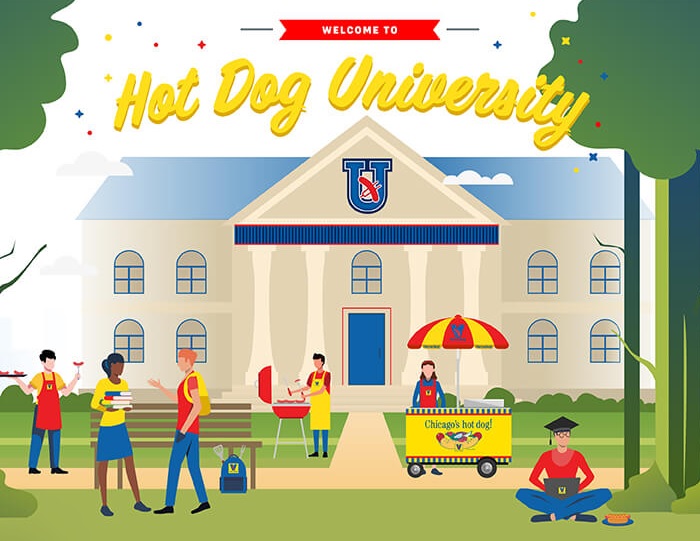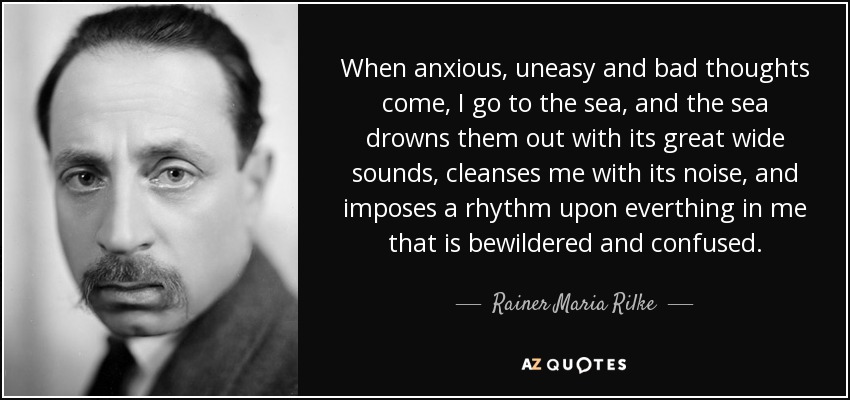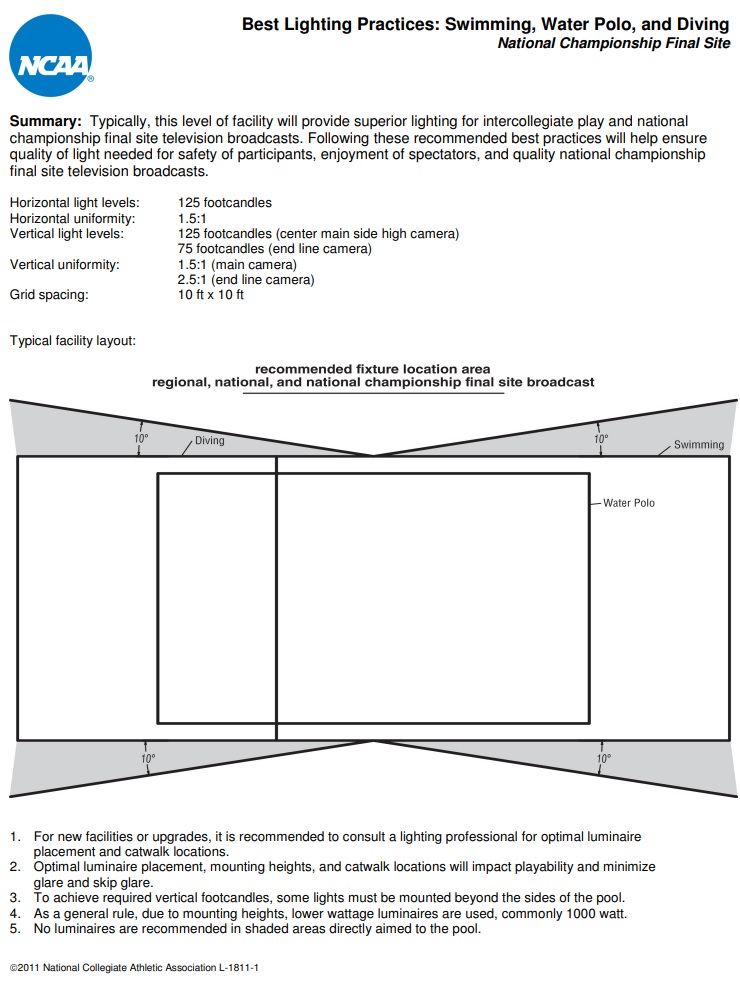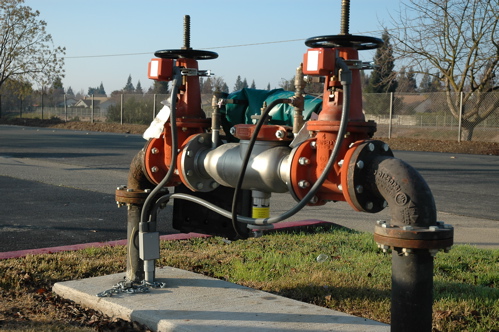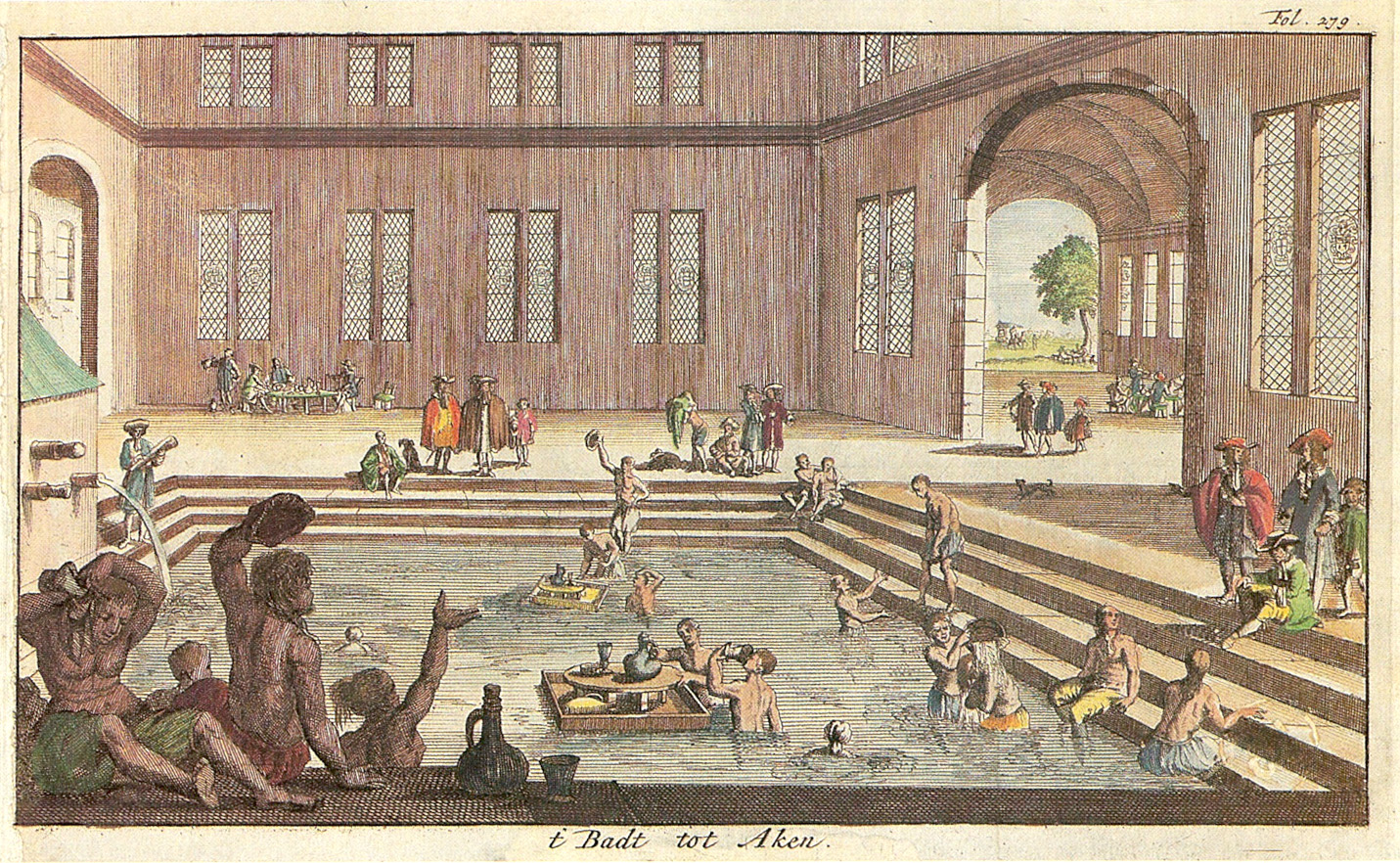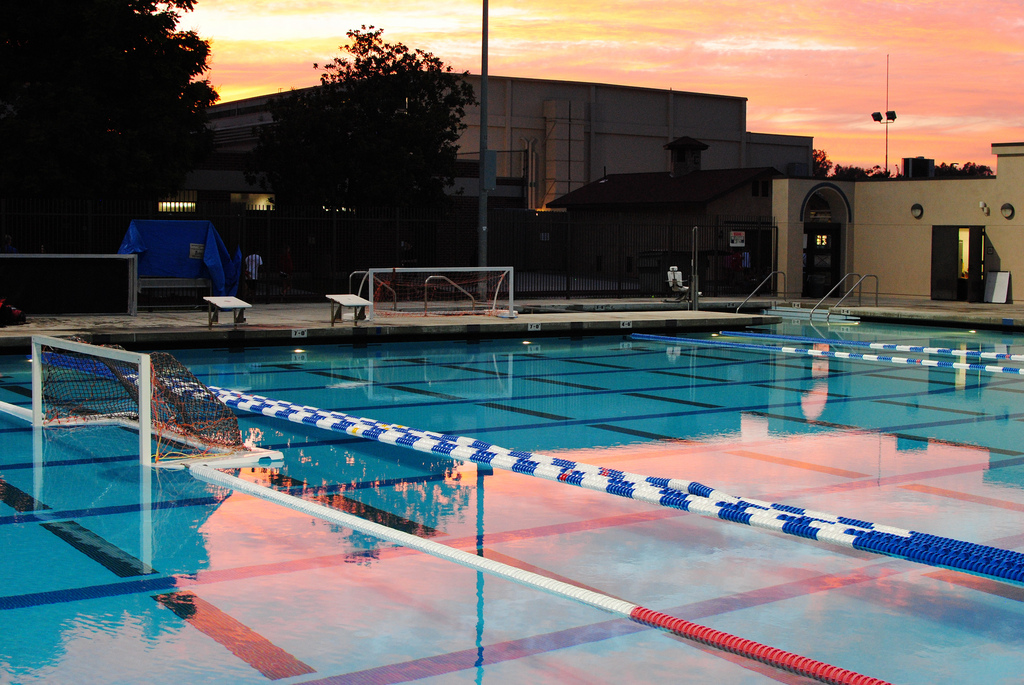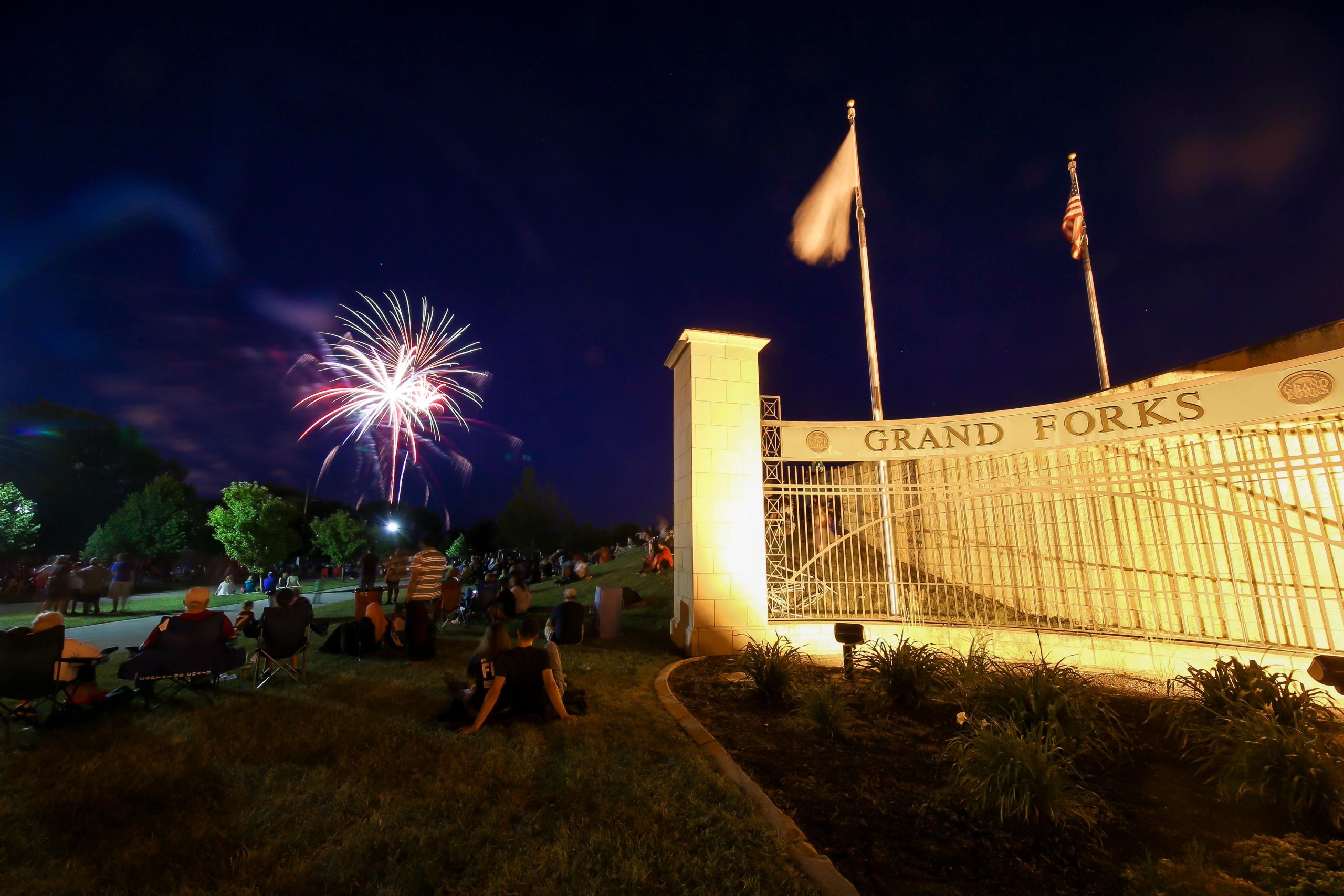Cobb Salad
- Home Page 91

Abide with Me
Abide with me; fast falls the eventide;
The darkness deepens; Lord with me abide.
When other helpers fail and comforts flee,
Help of the helpless, O abide with me.
Swift to its close ebbs out life’s little day;
Earth’s joys grow dim; its glories pass away;
Change and decay in all around I see;
O Thou who changest not, abide with me.
Not a brief glance I beg, a passing word,
But as Thou dwell’st with Thy disciples, Lord,
Familiar, condescending, patient, free.
Come not to sojourn, but abide with me.
Come not in terror, as the King of kings,
But kind and good, with healing in Thy wings;
Tears for all woes, a heart for every plea.
Come, Friend of sinners, thus abide with me.
Thou on my head in early youth didst smile,
And though rebellious and perverse meanwhile,
Thou hast not left me, oft as I left Thee.
On to the close, O Lord, abide with me.
I need Thy presence every passing hour.
What but Thy grace can foil the tempter’s power?
Who, like Thyself, my guide and stay can be?
Through cloud and sunshine, Lord, abide with me.
I fear no foe, with Thee at hand to bless;
Ills have no weight, and tears no bitterness.
Where is death’s sting? Where, grave, thy victory?
I triumph still, if Thou abide with me.
Hold Thou Thy cross before my closing eyes;
Shine through the gloom and point me to the skies.
Heaven’s morning breaks, and earth’s vain shadows flee;
In life, in death, O Lord, abide with me.
St. Olaf Facilities Department
Art, Design & Fashion Studios
Art presents a different way of looking at things than science;
one which preserves the mystery of things without undoing the mystery.
NFPA 1 Second Draft Meeting (A2026) June 2 – 3, 2025
We are guided by four interdependent titles that set the standard of care for safety and sustainability of occupancies supporting the fine arts in education communities.
(1) Chapter 43: Spraying, Dipping and Coating Using Flammable or Combustible Material of NFPA 1: Fire Code. As a “code” the public has free access to the current 2021 Edition , and Chapter 43 at the link below:
NFPA 1 Fire Code / Chapter 43 Spraying, Dipping and Coating Using Flammable or Combustible Materials
You get a sense of the back-and-forth among the technical committee members from the transcripts of committee activity linked below:
First Revisions Report (282 pages)
Our interest lies in fire safety provisions for educational occupancies with activity involving paint, chemicals used with paint (art studios) and Class III combustible materials (garment design & prototyping).







(2) NFPA also has another title — NFPA 33 Standard for Spray Application Using Flammable or Combustible Materials — provides more detail for instructional and facility maintenance operations activity.
(3) NFPA 101 Life Safety Code, much of which is derived from NFPA 1 (See: “How the Fire Code and Life Safety Code Work Together“)
(4) Finally, the International Code Council develops a competitor title — 2021 International Fire Code — which also provides fire safety standards for art, design and fashion studio safety. The IFC is developed in the Group A tranche of titles:
2021/2022 Code Development Group A
2024/2025/2026 ICC CODE DEVELOPMENT SCHEDULE
We encourage direct participation by education industry user-interests in the ICC and the NFPA code development process. A user interest in education community would have a job title similar to the following: Principal, Dean, President, Chief of Business Operations, Facility Manager, Trade Shop Foreman.
We maintain all four titles identified in this post on the standing agenda of our Prometheus (fire safety) and Fine Arts colloquia. See our CALENDAR for the next online meeting; open to everyone.
Issue: [10-31] [16-64]
Category: Fire Safety
Colleagues: Mike Anthony, Josh Evolve, Marcelo Hirschler
More
Northeastern University: Safety Guide for Art Studios
Princeton University: Art Safety
University of Chicago Art Studio Safety Policy
Hot Dog University
The iconic American “street food” traces its origin to 19th century German immigrants who brought frankfurters from their homeland.
In the 1860s, the term “hot dog” emerged in reference to these sausages being sold in buns at street carts. The popularity of hot dogs soared during the late 19th and early 20th centuries particularly at baseball games where the hot dog is virtually synonymous.at the sport.
In many college towns push cart hot dog vendors may be welcomed and even embraced as part of the local food scene. They can add variety and convenience for students, faculty, and staff by offering affordable and quick meal options. These towns may have regulations and policies in place to support and accommodate such vendors.
The case against hot dogs as a food primarily revolves around health concerns and potential risks associated with their consumption. Some of the key arguments include:
Processed meat and additives: Hot dogs are often made from processed meats that can contain additives, preservatives, and high levels of sodium. These additives, such as nitrates and nitrites, have been linked to increased risks of certain health issues, including cancer and heart disease.
High in unhealthy fats: Hot dogs are typically high in saturated and trans fats, which can contribute to elevated cholesterol levels and increase the risk of cardiovascular diseases.
Potential for contamination: There have been instances of foodborne illnesses associated with hot dogs, such as outbreaks of bacterial contamination, including E. coli or Listeria monocytogenes. Improper handling, storage, or undercooking can increase the risk of such contamination.
Allergens and dietary restrictions: Hot dogs often contain common allergens like wheat, soy, and dairy. Additionally, they may not be suitable for individuals with dietary restrictions or preferences, such as vegetarians, vegans, or those following specific religious or cultural dietary guidelines.
Environmental impact: The production and consumption of hot dogs contribute to environmental concerns. The meat industry, including processed meat production, is associated with greenhouse gas emissions, land degradation, and water pollution.
These arguments against hot dogs do not necessarily apply to all hot dogs or to every individual. Moderation, choosing healthier options, and considering individual dietary needs and preferences can help mitigate some of the concerns associated with hot dog consumption.
Relevant codes, standards and regulations:
Food Safety and Inspection Service: Federal Meat Inspection Act
U.S. Department of Agriculture: Hot Dogs and Food Safety
Texas Coffee School
Opening and operating a small coffee shop in Texas requires adherence to various codes and standards to ensure safety, legality, and quality service. Students get a front row view of the competing requirements of safety and economy even before the cafe atmospheric and economic viability make their passion a going concern.
1. Business Licenses and Permits:
- Business License: Obtain a general business license from your local city or county authority. Requirements and fees vary by location.
- Certificate of Occupancy: This certifies that your building complies with zoning laws and is safe for occupancy. It’s typically issued after necessary inspections.
- Food Handler’s License: All employees involved in food preparation or service must obtain this certification within 60 days of employment.
- Seller’s Permit: Required for businesses selling tangible goods subject to sales tax. You can register for this permit through the Texas Comptroller’s Office.
2. Health and Safety Regulations:
- Texas Food Establishment Rules: These rules outline standards for food safety, including employee hygiene, equipment sanitation, and food handling procedures.
- County and City Health Department Regulations
Featured Texas Coffee School Coffeepreneur®: @TheHiveJavaLounge #WomensHistoryMonth Zoraida Dobard was an educator with no prior experience in the coffee industry. She decided to follow her passion and create a space that resonated with her. pic.twitter.com/t5xBs1Assh
— Texas Coffee School (@TXCoffeeSchool) March 10, 2024
3. Building and Construction Codes:
- Building Codes: Ensure compliance with local building codes, which cover structural integrity, electrical systems, plumbing, and fire safety.
- Zoning Regulations: Verify that your chosen location is zoned appropriately for a food establishment.
- Accessibility Standards: Adhere to the Americans with Disabilities Act requirements to ensure your facility is accessible to all patrons.
4. Additional Considerations:
- Signage Permits: Obtain permits for exterior signs, as many municipalities have regulations governing signage size, lighting, and placement.
- Waste Disposal: Comply with local ordinances regarding waste management, including grease disposal and recycling.
- Insurance: While not a code or standard, securing appropriate insurance (e.g., general liability, property, and workers’ compensation) is crucial for protecting your business.
There’s enough “content” in the foregoing list of considerations to meet the requirement for an Associates Degree at any community college.
Starting and running a privately held coffee shop within a building located in the campus proper — think the franchise chains like Starbucks — is another layer of complexity in our session on Joint Use Agreements.
During Women’s History Month, we want to celebrate our female Coffeepreneurs®! Danika Young is the owner of Creative Bean Coffee, a family-oriented coffee shop in Rapid City, South Dakota. She opened her coffee business in June 2022, first from a mobile trailer for events. pic.twitter.com/6ckYJvSeqW
— Texas Coffee School (@TXCoffeeSchool) March 21, 2024
Water 330
“A flood is nature’s way of telling you
that you live in the wrong place.”
— Some guy
Water standards make up a large catalog and it will take most of 2023 to untangle the titles, the topics, proposals, rebuttals and resolutions. When you read our claim that since 1993 we have created a new academic discipline we would present the best practice literature of the world’s most abundance as an example.
The Water 100 session takes an aerial view of relevant standards developers, their catalogs and revision schedules.
The Water 200 session we examine the literature for best practice inside buildings; premise water supply for food preparation, sanitation and energy systems.
The Water 300 session we examine water management standards in selected nations with specific interest in educational settlements with proximity to oceans.
The Water 330 session we examine water management standards for swimming pools, hot tubs and spas in hospitals and athletic departments.
ANSI/APSP/ICC-11 2019 Water Quality in Public Pools and Spas
NSF International Water Standard Catalog
The Water 400 session will run through best practice catalogs of water management outside buildings, including interaction with regional water management systems.
The Water 500 session is a study of case histories, disasters, legal action related to non-conformance. Innovation.
— Coffee Anytime (@coffee_anytime) September 18, 2023
Water safety and sustainability standards have been on the Standards Michigan agenda since the early 2000’s. Some of the concepts we have tracked over the years; and contributed data, comments and proposals to technical committees, are listed below:
- Legionella mitigation
- Swimming pool water quality
- Fire protection sprinkler water availability and safety
– NFPA 70 Article 695 Fire Pumps - Backflow prevention/Cross-connect systems
- Security of district energy power plant and hospital water supply
- Electrical shock protection in pools, fountains, spas and waterfront recreational docking facilities
- Rainwater catchment
- Water in extreme weather events
- Flood abatement systems
- Building plumbing codes (ICC and IAPMO)
- Water Re-use
- Water heaters
- District energy water treatment
- Food service steam tables
- Greywater
- Residence hall potable water systems
- Water use in emergency shower and eyewash installations
- Decorative fountains.
- Standard for the Inspection, Testing, and Maintenance of Water-Based Fire Protection Systems
|
40 CFR § 141.92 – Monitoring for lead in schools and child care facilities |
Since 2016 we have tracked other water-related issues:
- Safe water in playgrounds
- National Seagrant College programs
- Guide to Infection Control in the Healthcare Setting
- Electrical safety around water (cooling towers, swimming pools, spas)
- ASTM Water Testing Standards
- ASTM Standard for Water Distribution
- Electricity and Water Conservation on College and University Campuses in Response to National Competitions among Dormitories: Quantifying Relationships between Behavior, Conservation Strategies and Psychological Metrics
Relevant federal legislation:
- Clean Water Act
- Drinking Water Requirements for States and Public Water Systems
- Resource Conservation and Recovery Act
- Safe Drinking Water Act
Relevant Research:
Real Time Monitoring System of Drinking Water Quality Using Internet of Things
IoT based Domestic Water Recharge System
Send bella@standardsmichigan.com an email to request a more detailed advance agenda. To join the conversation use the login credentials at the upper right of our home page.
More
IAPMO Publishes U.S., Canadian Standard for Detection, Monitoring, Control of Plumbing Systems
"The Great Archimedes"
Baylor University Presshttps://t.co/jbaGIt5tqW@Baylor_Press@BaylorECS pic.twitter.com/4FbcZqLPrQ— Standards Michigan (@StandardsMich) August 4, 2020
Which Australian beaches are microplastic hot-spots? Research from Macquarie University’s AUSMAP project can help you to find low pollution beaches: https://t.co/JK43XMuAIL #microplastics #AustralianBeaches #plasticpollution @AUSMAP_AU pic.twitter.com/FZDgsAZ0Gz
— Macquarie University (@Macquarie_Uni) January 21, 2022
More
Solitude Lake Management for Universities and Colleges
There are several universities in the United States with campuses that have property frontage on an ocean:
- University of California, Santa Barbara (UCSB) – UCSB is located along the Pacific Ocean in Southern California.
- University of California, San Diego (UCSD) – UCSD is situated near the coast of the Pacific Ocean in La Jolla, California.
- University of Hawaii at Manoa – The main campus of the University of Hawaii is located on the island of Oahu and has oceanfront property.
- University of Miami – Located in Coral Gables, Florida, the University of Miami is situated on the Atlantic Ocean coast.
- University of Rhode Island – URI is located in Kingston, Rhode Island, and has oceanfront property along Narragansett Bay and the Atlantic Ocean.
- Florida Atlantic University – FAU has several campuses along the southeastern coast of Florida, with some campuses near the Atlantic Ocean.
- University of California, Santa Cruz (UCSC) – UCSC is located along the California coast, offering stunning views of the Pacific Ocean.
- Pepperdine University – Pepperdine’s main campus is located in Malibu, California, right along the Pacific Ocean.
- University of California, Irvine (UCI) – UCI is located in Orange County, California, and is close to the Pacific Ocean.
- University of Southern California (USC) – USC is located in Los Angeles, California, and is not far from the Pacific Ocean.
Swimming, Water Polo and Diving Lighting
“In swimming, there are no referees, no foul lines,
no time-outs, and no substitutions.
It’s just you and the water.” – Unknown





There are several specific problems that swimming pool overhead lighting aims to solve:
- Visibility: Swimming pool overhead lighting is designed to improve visibility in and around the pool. This is important for safety reasons, as it helps swimmers see where they are going and avoid obstacles or hazards.
- Aesthetics: Overhead lighting can enhance the appearance of the swimming pool by creating a visually appealing atmosphere. This is especially important for commercial pools where the aesthetics can be an important factor in attracting customers.
- Functionality: Overhead lighting can provide additional functionality by allowing the pool to be used during evening hours or in low light conditions. This can increase the usability of the pool and make it more appealing to users.
- Energy efficiency: Modern overhead pool lighting solutions are designed to be energy-efficient, reducing the overall energy consumption and operating costs of the pool.
- Longevity: Overhead pool lighting must be designed to withstand exposure to water, chlorine, and other harsh chemicals, as well as exposure to the elements. The lighting system must be durable and reliable to ensure longevity and prevent costly repairs or replacements.
Overall, swimming pool overhead lighting is an important component of a safe, functional, and visually appealing pool. It provides illumination for visibility, enhances aesthetics, and improves functionality, while also being energy-efficient and durable.
After athletic arena life safety obligations are met (governed legally by NFPA 70, NFPA 101, NFPA 110, the International Building Code and possibly other state adaptations of those consensus documents incorporated by reference into public safety law) business objective standards may come into play. For almost all athletic facilities, the consensus documents of the Illumination Engineering Society[1], the Institute of Electrical and Electronic Engineers[2][3] provide the first principles for life safety. For business purposes, the documents distributed by the National Collegiate Athletic Association inform the standard of care for individual athletic arenas so that swiftly moving media production companies have some consistency in power sources and illumination as they move from site to site. Sometimes concepts to meet both life safety and business objectives merge.
During water sport season the document linked below provides information to illumination designers and facility managers:
Athletic programs are a significant source of revenue and form a large part of the foundation of the brand identity of most educational institutions in the United States. We focus primarily upon the technology standards that govern the safety, performance and sustainability of these enterprises. We collaborate very closely with the IEEE Education & Healthcare Facilities Committee where subject matter experts in electrical power systems meet 4 times each month in the Americas and Europe.
See our CALENDAR for our next colloquium on Sport facility codes and standards. We typically walk through the safety and sustainability concepts in play; identify commenting opportunities; and find user-interest “champions” on the technical committees who have a similar goal in lowering #TotalCostofOwnership.
Issue: [15-138]*
Category: Electrical, Architectural, Arts & Entertainment Facilities, Athletics
Colleagues: Mike Anthony, Jim Harvey, Jack Janveja, Jose Meijer, Scott Gibbs
More
Water Safety & Sustainability
The American Water Works Association is one of the first names in accredited standards developers that administer leading practice discovery in backflow prevention consensus documents; usually referenced in local and state building codes; and also in education facility design guidelines and construction specifications.
The original University of Michigan standards enterprise gave highest priority to backflow standards because of their central importance of backflow management to education communities; especially large research universities nested within a municipal water system. Backflow prevention; an unseen technology that assures a safe drinking water supply by keeping water running in one direction by maintaining pressure differences. Analogous to the way we want electrical current to run in one direction, failure of backflow prevention technology poses a near-instantaneous health risk for the contamination of potable water supplies with foul water. In the most obvious case, a toilet flush cistern and its water supply must be isolated from the toilet bowl. In a less obvious case, but at greater scale, a damaged backflow prevention technology at a university research building can contaminate an host-community potable water supply.
There are other ANSI accredited standards developers in the backflow prevention technology space — the International Code Council, the IAPMO Group and ASSE International — for example.
At the moment no AWWA redlines relevant to our objective are open for consultation. Several relatively stabilized product standards are marked up but none dealing specifically with interoperability issues. When they are uploaded you may access them at the link below:
AWWA Standards Public Comment Home Page
Students and Young Professionals
AWWA is the first name in US-based water standards so we maintain the AWWA catalog on our Plumbing & Water colloquia. See our CALENDAR for the next online meeting; open to everyone.
Issue: [11-57]
Category: Water Safety, Plumbing, Mechanical
Colleagues: Mike Anthony, Richard Robben, Steve Snyder, Larry Spielvogel
Happy birthday, Mary Oliver: ✨ pic.twitter.com/ZHxWgNZBaX
— Dr. Maya C. Popa (@MayaCPopa) September 10, 2023
LEARN MORE
Pool, Spa & Recreational Waters
Education communities provide a large market for recreational and therapeutic water technology suppliers. Some of the larger research universities have dozens of pools including those in university-affiliated healthcare facilities. Apart from publicly visible NCAA swimming programs there are whirpools in healthcare facilities and therapeutic tubs for athletes in other sports. Ownership of these facilities requires a cadre of conformance experts to assure water safety.
NSF International is one of the first names in this space and has collaborated with key industry stakeholders to make pools, spas and recreational water products safer since 1949. The parent document in its suite is NSF 50 Pool, Spa and Recreational Water Standards which covers everything from pool pumps, strainers, variable frequency drives and pool drains to suction fittings, grates, and ozone and ultraviolet systems.

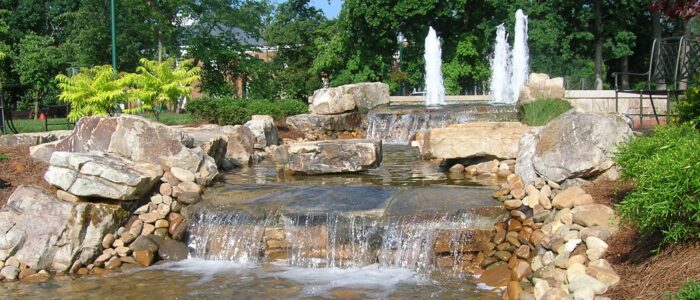
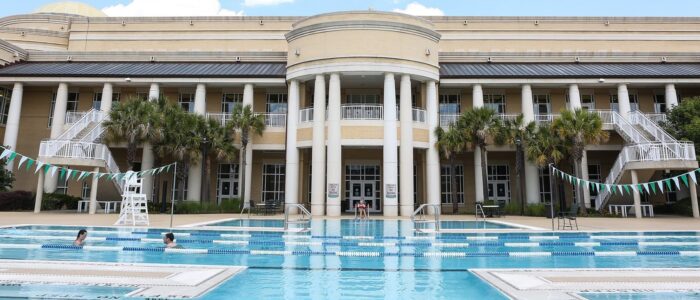
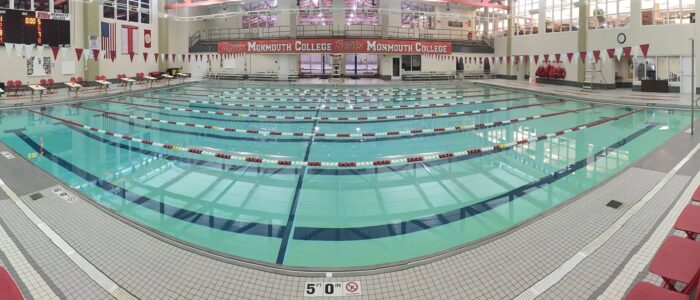
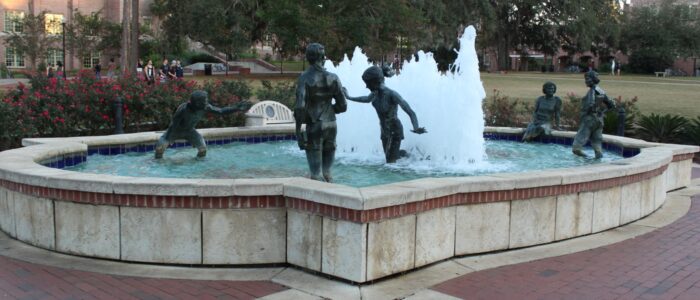
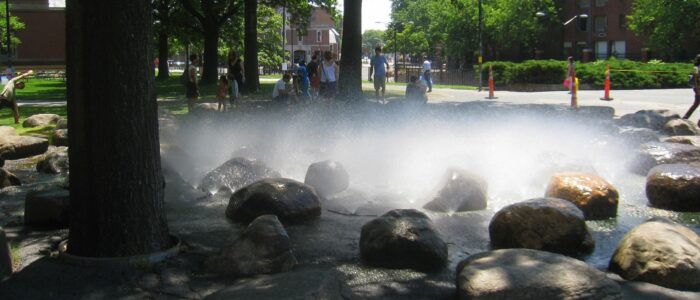
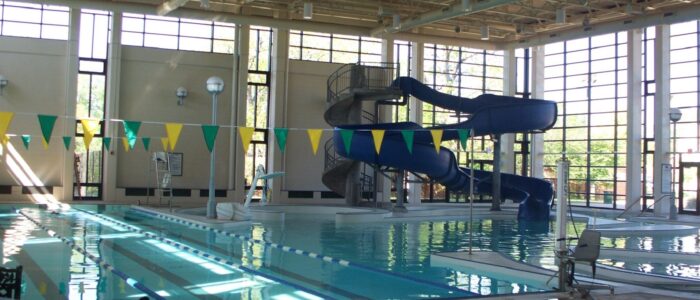

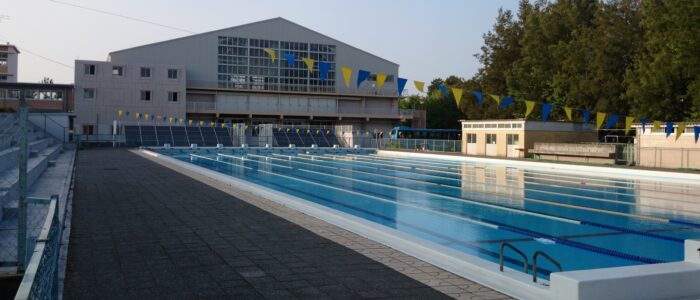


The workspace for this committee is linked below:
Joint Committee on Recreational Water Facilities
(Standards Michigan is an observer on this and several other NSF committees and is the only “eyes and ears” for the user interest; arguably the largest market for swimming pools given their presence in schools and universities.)
There are 14 task groups that drill into specifics such as the following:
Chemical feeders
Pool chemical evaluation
Flotation systems
Filters
Water quality
Safety surfacing
The meeting packet is confidential to registered attendees. You may communicate directly with the NSF Joint Committee Chairperson, Mr. Tom Vyles (admin@standards.nsf.org) about arranging direct access as an observer or technical committee member.
Almost all ANSI accredited technical committees have a shortage of user-interests (compliance officers, manufacturers and installers usually dominate). We encourage anyone in the education facility industry paying the bill for the services of compliance officers, manufacturers and installers to participate.











We maintain this title on the standing agenda of our Water and Sport colloquia. See our CALENDAR for the next onine meeting; open to everyone.
Issue: [13-89]
Category: Water, Sport
Colleagues: Mike Anthony, Ron George, Larry Spielvogel
More
IAPMO Swimming Pool & Spa Standards
UL 1081 Standard for Swimming Pool Pumps, Filters, and Chlorinators | (UL Standards tend to be product standards so we rank them lower in our priority ranking than interoperability standards.)
New update alert! The 2022 update to the Trademark Assignment Dataset is now available online. Find 1.29 million trademark assignments, involving 2.28 million unique trademark properties issued by the USPTO between March 1952 and January 2023: https://t.co/njrDAbSpwB pic.twitter.com/GkAXrHoQ9T
— USPTO (@uspto) July 13, 2023
Standards Michigan Group, LLC
2723 South State Street | Suite 150
Ann Arbor, MI 48104 USA
888-746-3670




